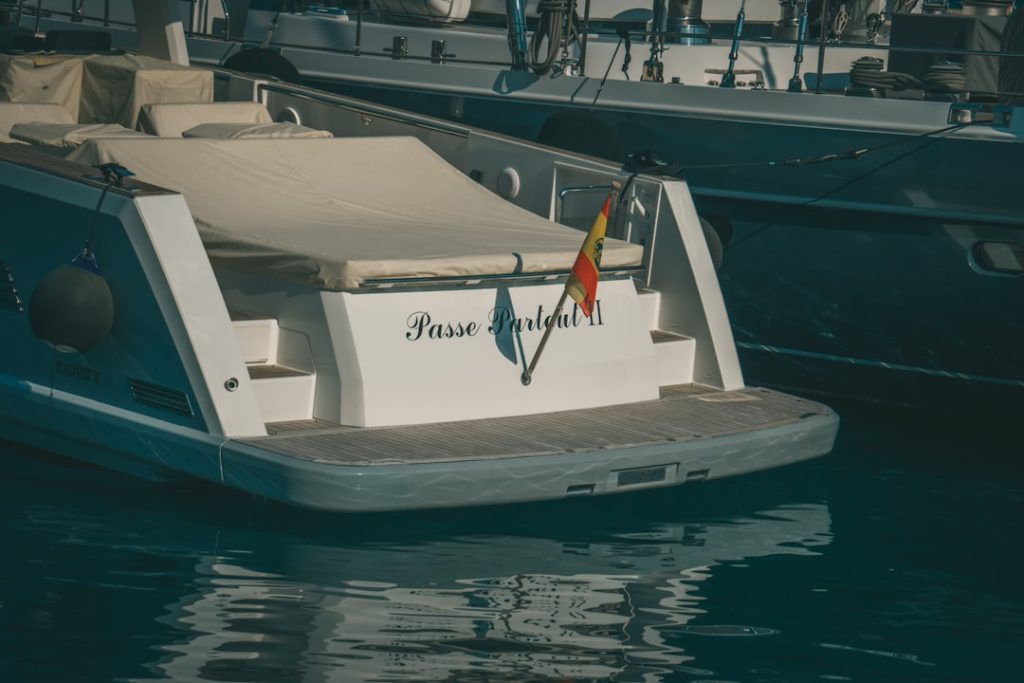The yacht market is a multifaceted industry that encompasses a wide range of vessels, from luxurious mega yachts to smaller sailing boats. Understanding this market requires a deep dive into various segments, including new builds, pre-owned sales, charter services, and the growing trend of fractional ownership. The global yacht market has seen significant growth over the past decade, driven by an increase in disposable income among high-net-worth individuals and a rising interest in leisure activities.
According to a report by Research and Markets, the global yacht market was valued at approximately $8 billion in 2020 and is projected to grow at a compound annual growth rate (CAGR) of around 5% through 2025. In addition to economic factors, the yacht market is influenced by lifestyle trends and consumer preferences. The rise of experiential luxury has led many affluent buyers to seek unique experiences rather than material possessions.
This shift has resulted in an increased demand for yachts that offer not just transportation but also a lifestyle choice that embodies freedom, adventure, and exclusivity. Furthermore, environmental considerations are becoming increasingly important, with buyers showing interest in eco-friendly yachts that utilize sustainable materials and energy-efficient technologies. Understanding these dynamics is crucial for anyone looking to navigate the yacht market effectively.
Key Takeaways
- Understanding the yacht market is essential for targeted marketing and sales strategies.
- Digital marketing and social media platforms are crucial tools for reaching potential buyers effectively.
- Creating compelling content helps engage and attract interested clients.
- Building strong relationships and collaborating with industry partners enhance trust and sales opportunities.
- Showcasing yachts at events and offering competitive financing options can boost buyer interest and conversions.
Leveraging Digital Marketing
In an era where digital presence is paramount, leveraging digital marketing strategies is essential for yacht brokers and manufacturers alike. The yacht industry has traditionally relied on word-of-mouth referrals and personal networks; however, the digital landscape has transformed how potential buyers discover and engage with yacht offerings. A well-structured digital marketing strategy can enhance visibility, attract leads, and ultimately drive sales.
This includes optimizing websites for search engines, utilizing pay-per-click advertising, and employing email marketing campaigns tailored to specific buyer personas. Search engine optimization (SEO) plays a critical role in ensuring that yacht listings appear prominently in search results. By incorporating relevant keywords related to yacht types, brands, and features, brokers can improve their online visibility.
Additionally, creating targeted landing pages that highlight specific yachts or services can enhance user experience and increase conversion rates. Social media advertising also offers a powerful tool for reaching potential buyers; platforms like Google Ads and Facebook Ads allow for precise targeting based on demographics, interests, and online behavior. By utilizing these digital marketing techniques, yacht sellers can effectively reach a broader audience and engage with potential buyers in meaningful ways.
Utilizing Social Media Platforms

Social media platforms have revolutionized the way businesses interact with their customers, and the yacht industry is no exception. Platforms such as Instagram, Facebook, and LinkedIn provide unique opportunities for yacht brokers to showcase their offerings visually and connect with potential buyers on a personal level. Instagram, in particular, is an ideal platform for sharing high-quality images and videos of yachts in stunning locations, allowing potential buyers to envision their future experiences on the water.
Engaging content such as virtual tours, behind-the-scenes footage of yacht maintenance or construction, and testimonials from satisfied clients can significantly enhance brand perception. Moreover, social media allows for real-time interaction with potential buyers. Brokers can respond to inquiries promptly, engage in conversations about yacht features or industry trends, and even host live Q&A sessions to address common questions.
This level of engagement fosters trust and builds relationships with prospective clients. Additionally, leveraging user-generated content—such as photos shared by happy yacht owners—can serve as powerful endorsements that resonate with potential buyers. By actively utilizing social media platforms, yacht brokers can create a vibrant online community that not only showcases their offerings but also cultivates lasting relationships with clients.
Creating Compelling Content
| Metric | Description | Typical Range | Importance |
|---|---|---|---|
| Engagement Rate | Percentage of audience interacting with content (likes, comments, shares) | 2% – 10% | High |
| Average Time on Page | Average duration visitors spend reading or viewing content | 1 min – 5 min | High |
| Click-Through Rate (CTR) | Percentage of users clicking on links within the content | 1% – 5% | Medium |
| Social Shares | Number of times content is shared on social media platforms | Varies widely | Medium |
| Conversion Rate | Percentage of users completing desired actions after consuming content | 1% – 3% | High |
| Bounce Rate | Percentage of visitors leaving after viewing only one page | 30% – 70% | Low to Medium |
| Content Frequency | Number of content pieces published per week | 1 – 5 | Medium |
| Keyword Ranking | Position of content in search engine results for targeted keywords | Top 10 preferred | High |
Content marketing is an essential component of any successful digital strategy in the yacht industry. Creating compelling content that resonates with potential buyers can establish authority and foster trust in a highly competitive market. This content can take various forms, including blog posts, videos, infographics, and e-books that provide valuable insights into yacht ownership, maintenance tips, or destination guides for cruising enthusiasts.
For instance, a well-researched blog post detailing the top sailing destinations for luxury yachts can attract readers who are considering purchasing a yacht for leisure travel. Video content is particularly effective in the yacht industry due to its visual nature. High-quality videos showcasing yacht features, performance on the water, or even testimonials from satisfied owners can captivate potential buyers’ attention more effectively than static images or text alone.
Additionally, creating educational content that addresses common concerns or questions about yacht ownership—such as financing options or maintenance requirements—can position brokers as knowledgeable resources in the field. By consistently producing valuable content that addresses the interests and needs of potential buyers, brokers can enhance their brand reputation and drive engagement.
Building Strong Relationships with Potential Buyers
In the yacht market, building strong relationships with potential buyers is paramount to success. Unlike many other industries where transactions may be quick and impersonal, purchasing a yacht often involves significant investment and emotional commitment. Establishing trust and rapport with clients can make all the difference in guiding them through the buying process.
This relationship-building begins long before any sale occurs; it involves understanding clients’ needs, preferences, and aspirations regarding their ideal yacht experience. Personalized communication is key to nurturing these relationships. Brokers should take the time to listen actively to clients’ desires and concerns while providing tailored recommendations based on their unique circumstances.
Regular follow-ups through phone calls or personalized emails can keep potential buyers engaged without being overly pushy. Additionally, hosting exclusive events or private viewings can create memorable experiences that deepen connections with clients. By prioritizing relationship-building efforts, brokers can position themselves as trusted advisors rather than mere salespeople, ultimately leading to higher conversion rates and long-term client loyalty.
Showcasing Yachts at Events and Boat Shows

Participating in boat shows and yachting events is an invaluable strategy for showcasing yachts to potential buyers while also enhancing brand visibility within the industry. These events provide an opportunity for brokers to present their offerings in person, allowing prospective clients to experience the yachts firsthand. The tactile experience of stepping aboard a vessel can significantly influence a buyer’s decision-making process; it allows them to assess the quality of craftsmanship, layout, and amenities that may not be fully conveyed through online listings.
Boat shows also serve as networking hubs where brokers can connect with other industry professionals, including manufacturers, service providers, and fellow brokers. Establishing relationships within this network can lead to valuable partnerships that enhance business opportunities. Additionally, hosting exclusive events or private viewings during boat shows can create a sense of exclusivity that appeals to high-net-worth individuals seeking unique experiences.
By strategically showcasing yachts at these events, brokers can effectively capture the attention of potential buyers while reinforcing their brand presence within the competitive yachting landscape.
Collaborating with Industry Partners
Collaboration within the yacht industry can yield significant benefits for brokers looking to expand their reach and enhance their service offerings. Partnering with complementary businesses—such as marine service providers, luxury travel agencies, or yacht management companies—can create synergies that benefit all parties involved. For instance, collaborating with a luxury travel agency could allow brokers to offer exclusive travel packages that include yacht charters alongside bespoke itineraries tailored to affluent clients’ preferences.
Furthermore, joint marketing initiatives can amplify brand exposure while reducing individual costs associated with advertising campaigns. By pooling resources for promotional efforts—such as co-hosting events or sharing marketing materials—partners can reach a broader audience while maintaining a cohesive brand message. Additionally, leveraging each other’s networks can facilitate introductions to potential buyers who may not have been reached through traditional marketing channels.
By fostering collaborative relationships within the industry, brokers can enhance their value proposition while creating mutually beneficial opportunities for growth.
Offering Competitive Financing Options
In the luxury yacht market, financing options play a crucial role in facilitating sales and making ownership more accessible to potential buyers. Many affluent individuals may not wish to tie up significant capital in a single asset; therefore, offering competitive financing solutions can be a game-changer in closing deals. Brokers should work closely with financial institutions that specialize in marine financing to provide clients with tailored options that suit their financial situations.
Flexible financing arrangements—such as low-interest loans or leasing options—can make it easier for buyers to invest in their dream yachts without compromising their liquidity. Additionally, providing clear information about financing terms and conditions can help demystify the process for potential buyers who may be unfamiliar with marine financing options. By offering comprehensive support throughout the financing process—from pre-qualification assessments to finalizing loan agreements—brokers can position themselves as trusted partners who prioritize their clients’ best interests.
This approach not only enhances customer satisfaction but also increases the likelihood of successful transactions in a competitive market environment.


